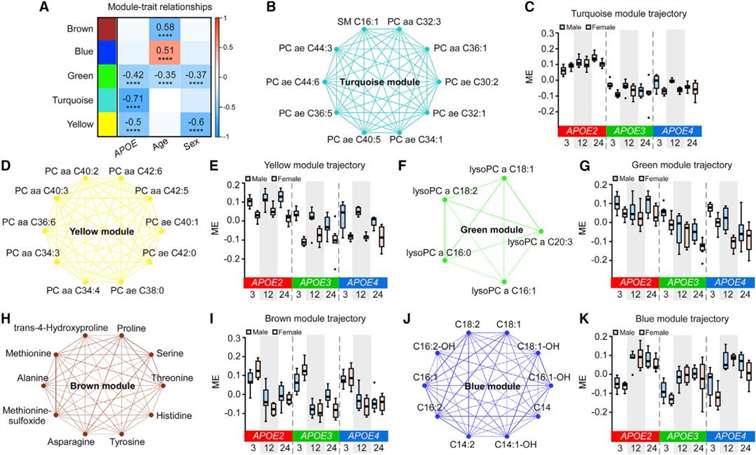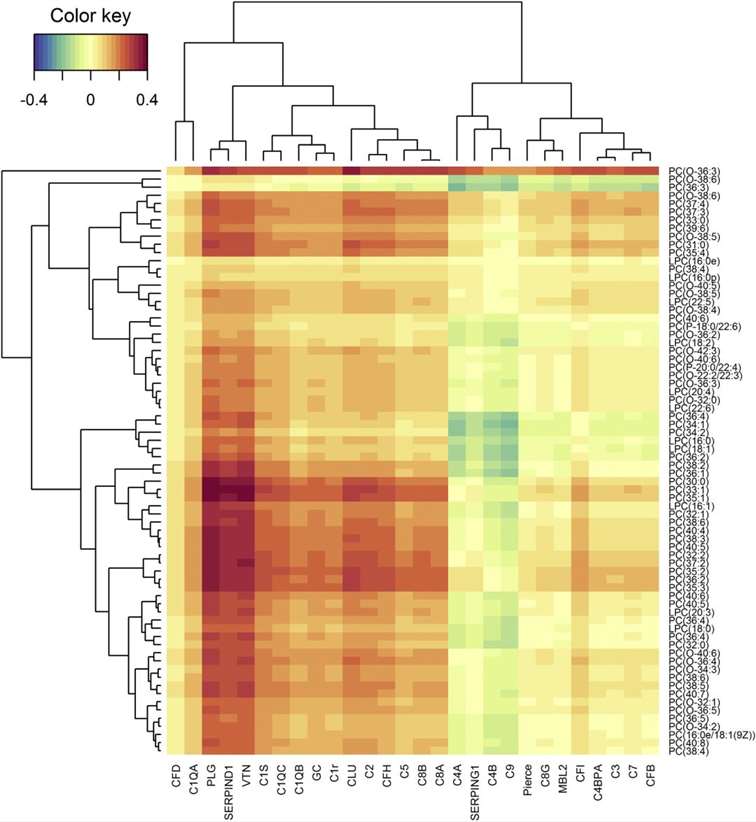There are many types of neurological diseases. Alzheimer disease (AD) is a progressive neurological disorder that causes brain shrinkage (atrophy) and brain cell death. Mental disorders are diseases in which the brain dysfunction under the influence of various biological, psychological and social environmental factors leads to different degrees of impairment in mental activities such as cognition, emotion, volition and behavior as clinical manifestations. The rapid development of life-omics technology promotes multi-omics analysis as an important tool for basic research of neurological diseases.
Case 1 Blood metabolomics and transcriptomics reveal molecular mechanisms of multifactorial interactions in AD (1)
AD is a common neurodegenerative disease in the elderly. Age is the greatest risk factor for episodic AD, and the incidence of AD increases progressively with age. Previous studies have shown that apolipoprotein E (APOE) genotype, environmental factors, gender, and neurotransmitter dysfunction all have a significant impact on the onset and progression of AD disease. However, current studies do not fully explain all clinical manifestations of AD, suggesting that AD is a group of diseases that are regulated by multiple factors.
The authors performed transcriptomic as well as serum metabolomic analyses of the cerebral cortex in mice of different ages, sexes and APOE genotypes. Analysis of variance (ANOVA) revealed that age was the key factor contributing to brain transcriptome differences, while serum metabolome differences were mainly influenced by APOE genotype.
Metabolomic WGCNA analysis of sera from mice with different APOE genes showed that metabolites in the modules upregulated by APOE2 were mainly lipid metabolites compared to APOE3 or APOE4 genotypes and that lipid metabolism was also associated with sex. The module metabolites that were significantly associated with age were amino acids, biogenic amines, and acylcarnitines.

WGCNA analysis of mouse serum metabolome
In this study, brain transcriptome and serum metabolome analyses were performed in mice of different ages, sexes and APOE genotypes. WGCNA analysis and comparative analysis of differences clarified the unique and intersecting molecular pathways of age, sex and APOE genotypes for AD disease development, providing new ideas for deeper analysis of the molecular mechanisms of AD disease.
Case 2 Lipidomics + DIA reveals the characteristics of lipid metabolism in early psychosis and the interaction with related proteins (2)
Biometric identification of psychiatric disorders facilitates the pathophysiological study of these disorders and the screening of biomarkers with early detection and diagnostic potential.
A total of 61 PC lipid molecules and 11 LPC lipid molecules were detected by lipidomic analysis of plasma samples from 115 participants at age 12 years. A total of 34 lipid molecules were screened by univariate statistical analysis. After FDR correction, 16 lipid molecules remained upregulated in the PEs group. The results of univariate analysis were consistent with those of multivariate analysis.
The results of previous studies have shown abnormalities in the coagulation pathway during childhood in patients with psychiatric disorders. In this study, plasma samples from 115 participants at the age of 12 years were tested for 22 proteins in the coagulation pathway using the DIA technique. A total of 3 coagulation proteins were screened by univariate statistical analysis. after FDR correction, only 1 protein (PLG) remained upregulated in the PEs group.
Coagulation and complement pathway proteins are closely related in function. The authors included proteins in the complement pathway that were accessible in the combined analysis. The correlation analysis showed that 17 lipid molecules were positively correlated with 6 proteins, with strong correlations for PLG, heparin cofactor 2 in the coagulation pathway and vitronectin in the complement pathway.
Lipidomic and proteomic analyses revealed that 12 PCs, 4 LPCs, and PLG of the coagulation pathway had significant changes in the control and PEs groups, and most of the lipid molecules had strong correlations with PLG.

Heat map analysis performed by using regularized canonical correlations analysis showing the relation between proteomic and lipidomic datasets.
Resources
- Zhao, N., Ren, Y., Yamazaki, Y., et al. (2020). Alzheimer's risk factors age, APOE genotype, and sex drive distinct molecular pathways. Neuron, 106(5), 727-742.
- Madrid-Gambin, F., Föcking, M., et al. (2019). Integrated lipidomics and proteomics point to early blood-based changes in childhood preceding later development of psychotic experiences: evidence from the Avon Longitudinal Study of Parents and Children. Biological psychiatry, 86(1), 25-34.









